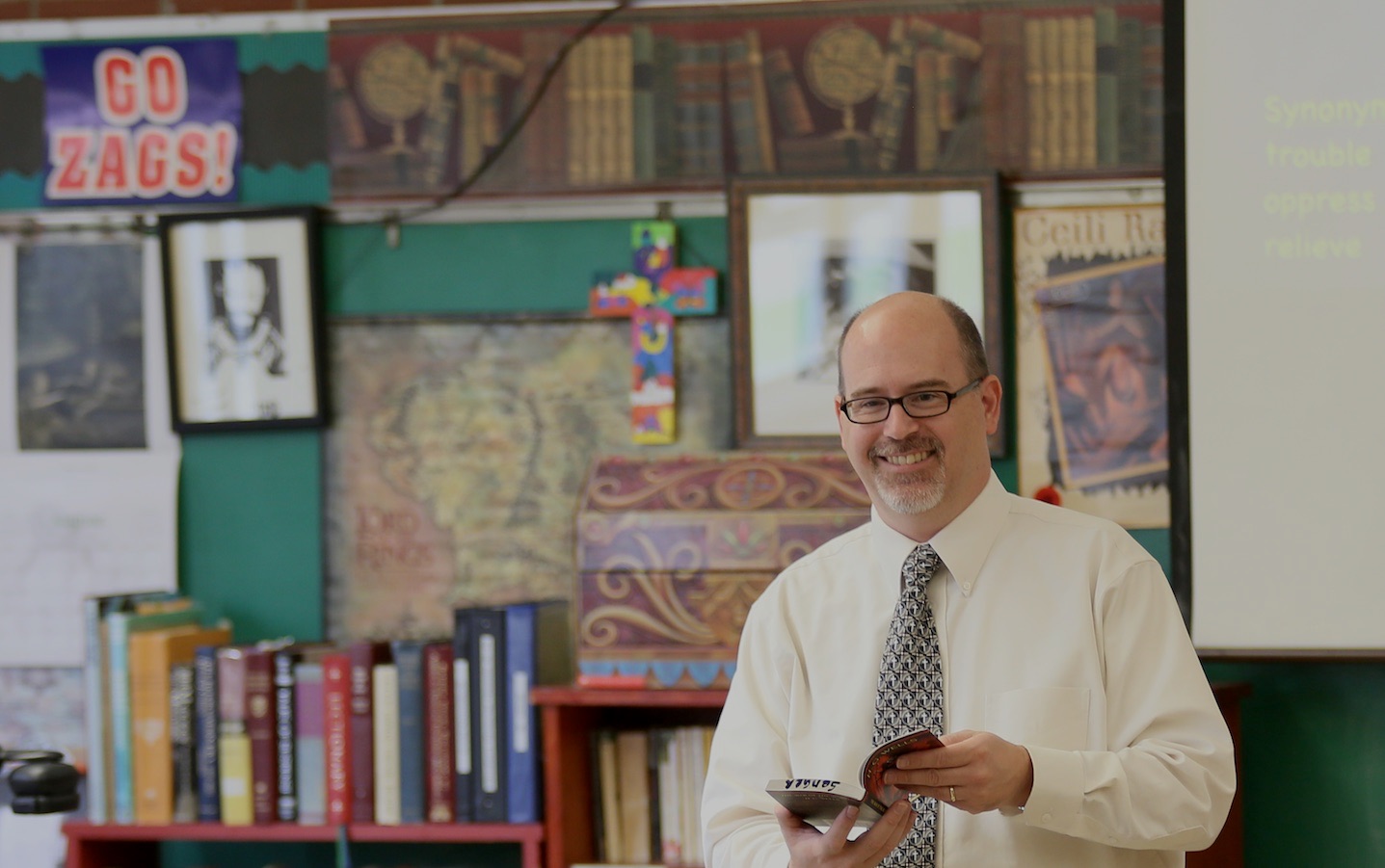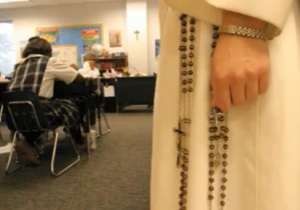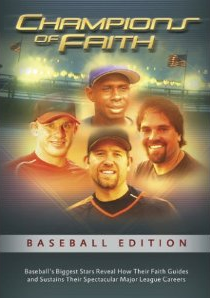Where did the tradition of carving pumpkins come from? That is the question that haunts Jack, a pumpkin in need of psychiatric help. In the following video by Fr. Roderick Vonhögen of SQPN, Jack learns the legend behind this practice and comes to terms with his own insecurities.
Here’s another account of the legend, courtesy of Wikipedia:
An old Irish folk tale tells of Stingy Jack, a lazy yet shrewd farmer who uses a cross to trap the Devil. One story says that Jack tricked the Devil into climbing an apple tree, and once he was up there Jack quickly placed crosses around the trunk or carved a cross into the bark, so that the Devil couldn’t get down. Another myth says that Jack put a key in the Devil’s pocket while he was suspended upside-down.
Another version of the myth says that Jack was getting chased by some villagers from whom he had stolen, when he met the Devil, who claimed it was time for him to die. However, the thief stalled his death by tempting the Devil with a chance to bedevil the church-going villagers chasing him. Jack told the Devil to turn into a coin with which he would pay for the stolen goods (the Devil could take on any shape he wanted); later, when the coin/Devil disappeared, the Christian villagers would fight over who
had stolen it. The Devil agreed to this plan. He turned himself into a silver coin and jumped into Jack’s wallet, only to find himself next to a cross Jack had also picked up in the village. Jack had closed the wallet tight, and the cross stripped the Devil of his powers; and so he was trapped. In both myths, Jack only lets the Devil go when he agrees never to take his soul. After a while the thief died, as all living things do. Of course, his life had been too sinful for Jack to go to heaven; however, the Devil had promised not to take his soul, and so he was barred from hell as well. Jack now had nowhere to go. He asked how he would see where to go, as he had no light, and the Devil mockingly tossed him an ember that would never burn out from the flames of hell. Jack carved out one of his turnips (which was his favourite food), put the ember inside it, and began endlessly wandering the Earth for a resting place. He became known as “Jack of the Lantern”, or Jack-o’-Lantern.

 “It would be impossible to imagine our American society today without the transforming grace of Catholic school graduates.” – Archbishop Wilton Gregory of Atlanta, October 18, 2010
“It would be impossible to imagine our American society today without the transforming grace of Catholic school graduates.” – Archbishop Wilton Gregory of Atlanta, October 18, 2010 Catholic educators, you are awesome! You work tirelessly, sacrificing yourself for the good of the gospel. Your commitment to sharing your faith and building up the kingdom is amazing! Don’t lose hope, don’t give up. Your life is truly inspirational. You deserve the following video to make you smile at the end of the week. Kick back, grab a glass of something soothing, and enjoy. And if you like it, share it with someone else who needs it:
Catholic educators, you are awesome! You work tirelessly, sacrificing yourself for the good of the gospel. Your commitment to sharing your faith and building up the kingdom is amazing! Don’t lose hope, don’t give up. Your life is truly inspirational. You deserve the following video to make you smile at the end of the week. Kick back, grab a glass of something soothing, and enjoy. And if you like it, share it with someone else who needs it: Phil Keaggy is one of the greatest guitarists of all time. Regularly listed at the top of Guitar Player Magazine polls, he also has a voice as honey smooth as Paul McCartney’s. His musical style runs the gamut: solo acoustic, electric blues, melodious pop, classic rock, you name it. And since the mid-1970s, he has used his considerable talent to spread the Gospel.
Phil Keaggy is one of the greatest guitarists of all time. Regularly listed at the top of Guitar Player Magazine polls, he also has a voice as honey smooth as Paul McCartney’s. His musical style runs the gamut: solo acoustic, electric blues, melodious pop, classic rock, you name it. And since the mid-1970s, he has used his considerable talent to spread the Gospel.
 bad, as the pirates say. Take September, a bad month: school begins. Consider August, a good month: school hasn’t begun yet. July, well July’s really fine: there’s no chance in the world for school. June, no doubting it, June’s best of all, for the school doors spring wide and September’s a billion years away.
bad, as the pirates say. Take September, a bad month: school begins. Consider August, a good month: school hasn’t begun yet. July, well July’s really fine: there’s no chance in the world for school. June, no doubting it, June’s best of all, for the school doors spring wide and September’s a billion years away.